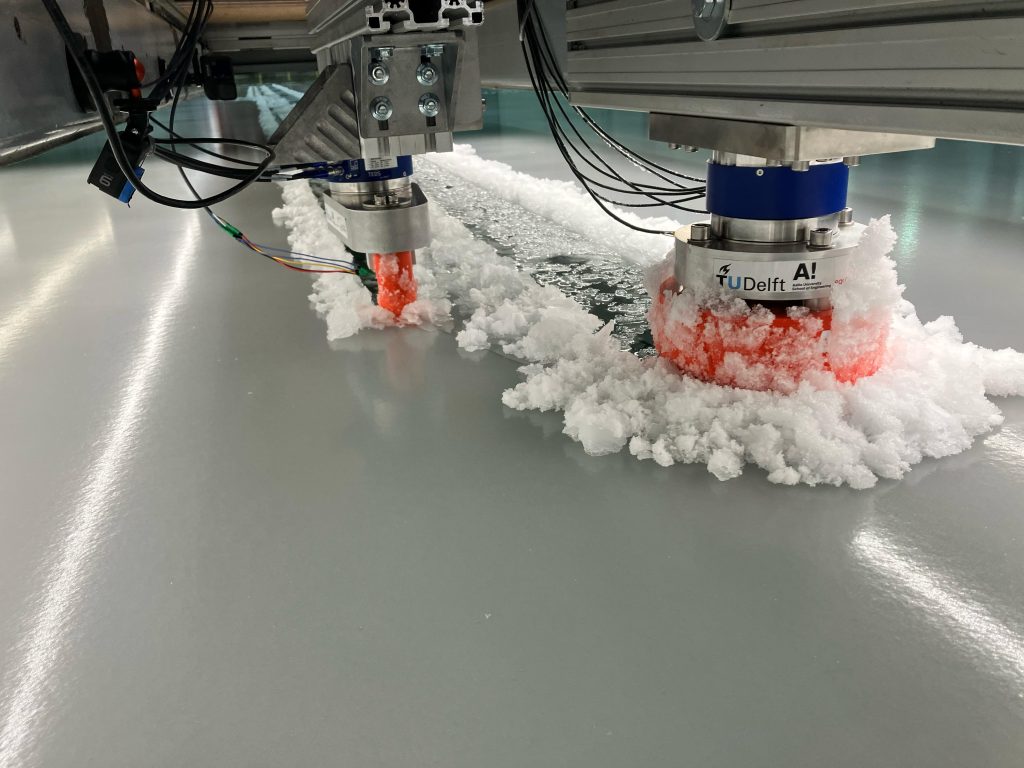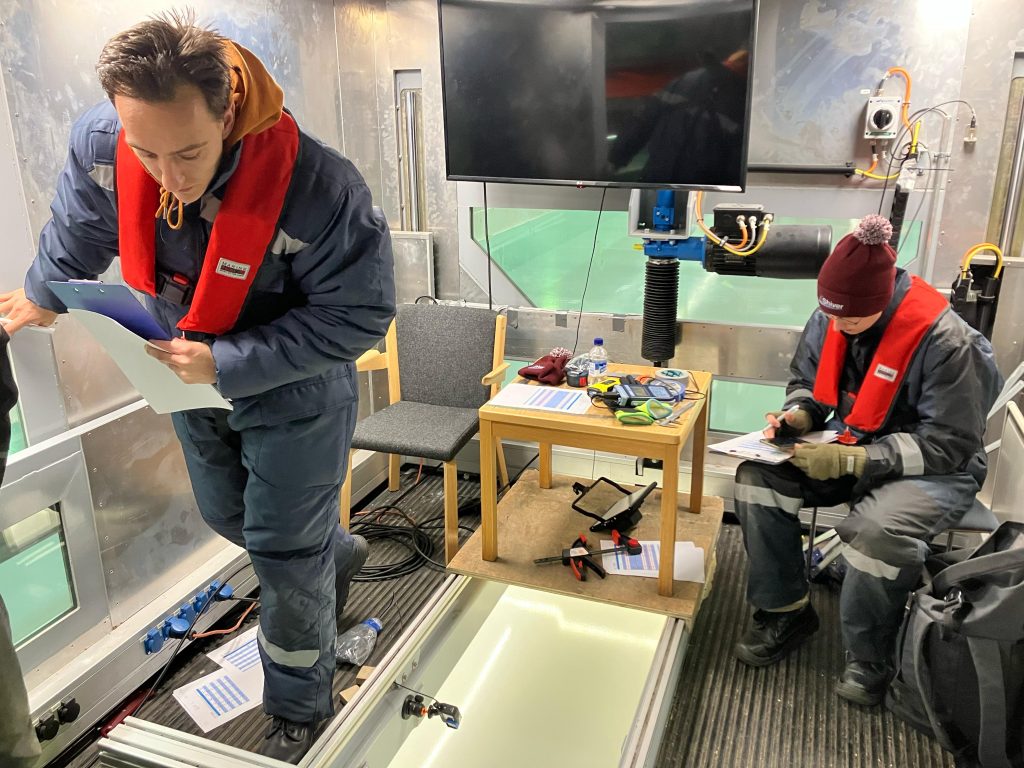Campaign Examines the Challenge of Appurtenances
7th May 2025, London and Copenhagen: Florian van der Stap, an engineer within the CALM (Climate Analytics, Loads and Metocean) department and a PhD student at the Delft University of Technology (TU Delft) is part of a campaign to investigate how the presence of appurtenances affects global ice loads on offshore structures – something of high interest and relevance to the growing offshore wind sector.
Sponsored by Wood Thilsted, Florian’s work and the subsequent tests are part of a research collaboration between TU Delft, Aalto University (Finland), Equinor and Wood Thilsted.
Why is this Research Taking Place?
The goal of this test campaign is to collect specific data for validation and to assess whether existing methods can be safely applied. Key aspects of the investigation include the orientation of the appurtenances with respect to the incoming ice, their relative size and geometry, and their influence on global ice loads. By reducing uncertainty in global load estimates when appurtenances are present, ice load assessments can be improved, potentially resulting in more optimised structural designs.
The Challenge of Appurtenances – Managing Ice and Structures
This research focuses on the behaviour of appurtenances under ice loading, particularly due to drifting sea ice. Appurtenances, such as ladders and boat landings, are vulnerable to significant forces exerted by ice through interaction with drifting sea ice, thermal expansion and contraction, and spray or rain-induced icing. These interactions may lead to structural fatigue or even failure of secondary steel members if not accounted for. This, in turn, increases the costs and reduces durability of offshore wind assets.
The dynamic interaction between drifting sea ice and structures is non-linear and complex. Ice can jam, pile up, or form ridges unpredictably. Additionally, sea ice loads are induced through various “failure modes”, such as crushing, bending, or splitting, which must all be considered in structural design.
For secondary steel structures, both ice accretion and interactions with drifting sea ice must be carefully considered. Appurtenances in the spray zone are particularly susceptible to ice accretion, which in turn can pose significant operational hazards. However, the primary focus of this research is on the impact of drifting sea ice on these structures. Ice may crush against them directly, generating high localised pressures, or become jammed between the appurtenances and the main foundation, resulting in unpredictable loading. Conversely, crack formation between an appurtenance and the foundation may serve as a load-relieving mechanism, reducing the ice actions. Understanding these interactions is crucial for the safe and cost-effective design of offshore wind turbine support structures.


Above left: Testing in the Ice Tank. Above Right: Research Partners Florian van der Stap and Tim Hammer.
Need for Contemporary Research
The presence of appurtenances make the structure a multi-member structure, from the perspective of the ice. To this end, it is important to account for sheltering, interference and jamming effects. Guidance on these topics can be found in design standards. However, existing design standards mostly relate to four-legged structures with equal leg diameters based on research conducted in the 1990s. It is highly unlikely that this data remains relevant for modern sized structures, such as XXL monopiles, where the primary steel centre column is significantly larger than the secondary steel attachments. New research in this area is crucial in helping to make the offshore wind sector more efficient, productive and safer than ever before.
The research is particularly relevant to the growing offshore wind sector in the Baltic Sea region and around areas such as the east coast of Canada that are all prone to ice.
